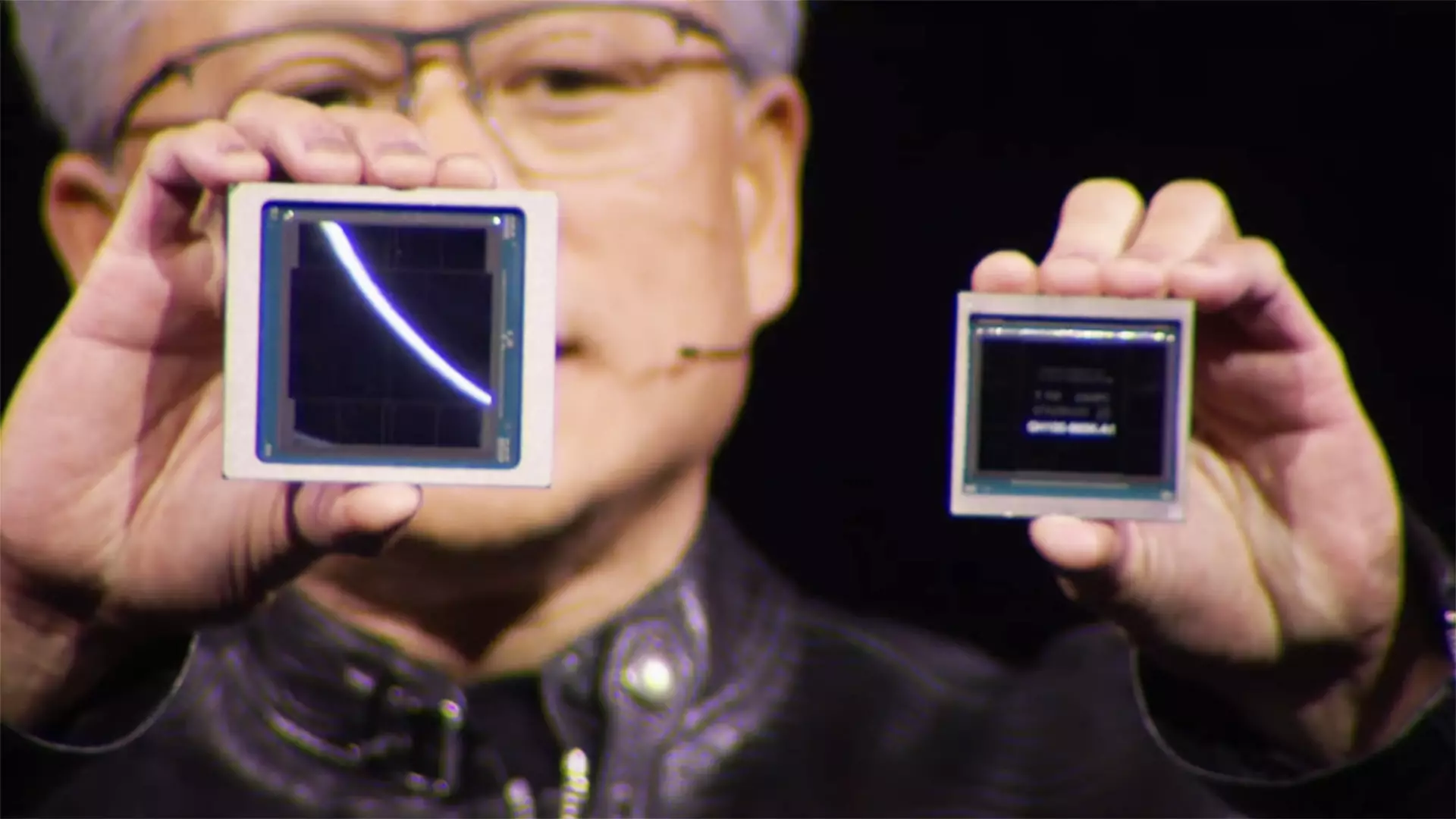As artificial intelligence continues to reshape our world, the conversation around semiconductor technology, particularly AI chips, has surged. This surge is not only due to the impressive capabilities of these technologies but also their potential implications for national security. The ongoing battle between the United States and China over AI supremacy has evolved into something resembling a high-stakes spy thriller: with discussions of remote disabling and tracking technologies for chips developed by companies like Nvidia. This isn’t merely fantasy; it’s a reflection of the real-world implications of technological advancements and the geopolitical tensions they incite.
Proposed legislation by Democratic Representative Bill Foster reflects this reality. It aims to ensure that powerful AI chips can be tracked through sophisticated mechanisms embedded in their design. The objective would be to monitor chip distribution closely and, if necessary, disable them should they end up in nations deemed restricted, primarily targeting China. This initiative illustrates how deeply entwined technology and national policy have become as countries race to harness the power of AI.
The Geopolitical Chess Game: America’s Strategy
The stakes couldn’t be higher as the United States seeks to maintain its technological edge. The U.S. government has already enacted strict export controls aiming to prevent advanced AI chips from reaching Chinese soil, an action stemming from fears of these technologies being used to enhance China’s military or surveillance capabilities. The envisioned three-tiered export strategy—differentiating between nations that can access U.S. technology and those that cannot—demonstrates an aggressive approach to maintaining national security.
This strategy, however, appears to have collateral damage. Nvidia, a key player in the industry, has expressed concern over potential revenue losses due to restrictions. The financial ramifications are significant, with Nvidia projecting substantial charges tied to inventory and purchase commitments, hinting at a strained economic environment spurred by geopolitical maneuvering. As lawmakers scramble to impose barriers, companies are left grappling with the aftermath of these decisions.
The Complexity of Implementation: Tracking vs. Reality
The complexities of implementing effective tracking mechanisms for AI chips bring forth numerous questions. While the technology to track and potentially disable these chips is reportedly feasible, the efficacy of such measures is still a topic of skepticism. Track and trace systems may offer a semblance of control, but they also invite the possibility of circumvention.
How exactly do we prevent foreign powers from accessing these vital technologies? The proposed legislative measures could indeed provide some insight into a chip’s location, but the practical application of remote disabling raises a plethora of questions. Will a chip designed to “phone home,” indicating its whereabouts, be inherently vulnerable to hacking or manipulation? The belief that an infallible system is within reach may be overly optimistic, particularly given the innovative ways adversaries have historically outmaneuvered restrictions imposed by governments.
The Broader Impact on Technological Advancements
As the U.S. tightens its grip on AI chip exports, one wonders about the long-term implications on global technology development. A trade war wrapped up in technological restrictions could stifle innovation, particularly if both nations decide to retreat to their corners, erecting walls around their advancements rather than encouraging open collaboration. If China, as some analysts suggest, aims to lessen its reliance on U.S. technology, then a bifurcated tech landscape might emerge, challenging the collaborative global innovation model that has characterized the tech industry for years.
Interestingly, while the U.S. aims to lock down its advanced technologies, there’s an irony to consider: these actions could expedite China’s own technological growth. By incentivizing innovation in domestic chip-design capabilities, restrictions may inadvertently spur the very developments that the U.S. seeks to suppress. It’s a complex dance—a push-and-pull that could redefine market dynamics, if not on an immediate scale, certainly over the long term.
Nvidia at the Crossroads
For a company like Nvidia, which stands as a titan in the chip manufacturing landscape, these shifts create both challenges and opportunities. On one hand, trade restrictions hamper revenue potential, and investors might enter a state of unease, imagining future disruptions ahead. Still, Nvidia’s current market position as one of the top three enterprises globally indicates that it has resilience. The trajectory of AI technology is inevitable, and while geopolitical tensions might carve out hurdles, companies with innovation at their core will likely adapt and thrive.
In the grand scheme of national security and technological prowess, the vigilant eye fixed on AI chips underscores that we are venturing into uncharted territory. The outcome of this legislative effort, coupled with the US-China technological skirmish, could not only determine the balance of power in AI but reshuffle the cards in the broader tech ecosystem. As companies and nations alike navigate these turbulent waters, the stakes will continue to rise, informing decisions that will resonate for years to come.


Leave a Reply